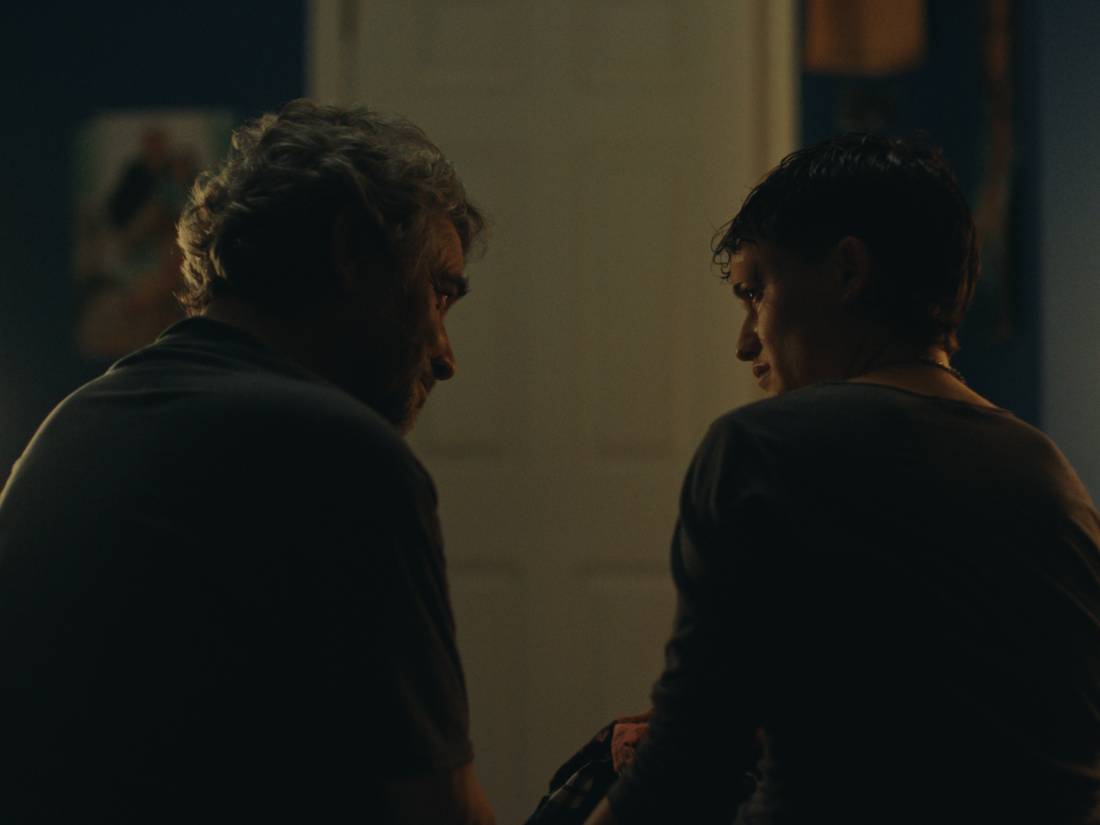Feña and the Terrible, Horrible, No Good, Very Bad Day
Mutt is a film that goes through a day with Feña, a transgender man. During that day, Feña runs into his ex-boyfriend, who he was with before his transition, and his sister who he hasn’t seen since before transition, all while trying to get a car to pick up his father from the airport who, you guessed it, Feña hasn’t seen since transitioning. The film, directed by a transgender man, gives audiences a look into a day in the life of a trans person (granted a very bad day). The film, much like Sedwick’s Epistemology of the Closet, examines the binary options and demonstrates how they are unstable. The film examines binaries not just in terms of gender, but also in terms of ethnicity, with the main character being mixed (hence the name of the film). We see Feña having the navigate the gender binary through his experiences with clerks, for example, the bank clerk viewing him as female and the pharmacy clerk viewing him as male. But we also see him navigating experiences of ethnicity, bouncing between English and Spanish when talking with his father, and the frankly weird reactions from other people, like the guy who borrows a lighter from Feña.
The film also examines the binary of past and present, something I hadn’t realized until we discussed it in class. We can see this examination, especially during scenes with Feña’s father, either when he is looking at old photos in Feña’s room or talking about when Feña was a little girl. When Feña’s father talks about Feña as a kid, Feña both is and isn’t a little girl (like Schrodinger's cat). To his father, Feña was a little girl, but to Feña, as he said when talking with his ex-boyfriend John, Feña was always a guy. This too is reminiscent of Sedwick’s Epistemology of the Closet in terms of the closet being a contradictory place. I think this examination of the binary of past and present is the hardest to grasp, but also the most interesting. It’s something I’ve thought about in terms of my own transition, although I see it differently than Feña. To me, when my parents talk about me as a kid, describing me as a little girl would be accurate. When I was five, I was a girl. It wasn’t until I got older that I realized I no longer fit into that category. My experience of gender is more similar to how Bornstein describes it: as a spectrum. Even now, I wouldn’t consider myself perfectly fitting into one category or another.
Someone pointed out during class how the synopsis of the film's problem and the actual problem seemed different. They mentioned how the synopsis of the film makes it seem like being trans is Feña’s issue, but the actual issue is getting a car to pick up his dad. I think that’s true in some regard, but I think in the film, while being trans isn’t the main issue, it’s something that is added on top of other issues. For example, having your sister run away from school and show up at your work is a problem in and of itself, and then on top of that is the problem of “Oh shit now I have to explain that mom kicked me out because I’m trans.” And it’s the same with the ex-boyfriend; seeing an ex is somewhat of a problem, but then add on top of that that it’s an ex you were with before transitioning. And I think that’s a pretty realistic aspect of what it’s like to be transgender. When you’re trans, there’s always a possibility that whatever problem or situation you’re dealing with, being trans could add to it. For example, say you have to pick up your HRT prescription from the pharmacy. You go to the pharmacy to pick up your prescription, but you need a certain needle size. You tell the pharmacist this, and they tell you they don’t have that size, so now you have to call each of the pharmacies in your area to see which pharmacy has the needle size you need. Now imagine you have to do this every. single. month. The situation itself isn’t a problem, but because you’re trans (in this hypothetical prescription pickup situation), the situation has become a problem. And so, I think the film is trying to highlight all the little things that come with being trans that can add up and make an already terrible situation or day worse.
Citations:
- Bornstein, Kate. Gender Outlaw: On Men, Women, and The Rest of Us. Routledge New York 1994
- Sedgwick, Eve Kosofsky. Epistemology of the Closet. Berkeley: University of California Press, 1990.


First of all, I love your title for your blog post! We talked about it in class a little bit, but the coincidence of all these terrible things happening to Feña in one day is fantastical, but it is a good median or average representation of the struggles a trans man would face in his relationships. I like that you mention that the problems Feña faces in his day are bad enough, but tossing on the fact that Feña is navigating his relationships with his estranged loved ones makes everything more complicated and difficult.
ReplyDeleteYour use of Schrodinger's cat as an illustration slides nicely alongside Sedgwick's elucidation of the amorphous closet/out divide, for sure. Bringing your personal experience of transition & gender boundaries to your look at the way Feña holds multiplicities of identity in tension with one another is a great affirmation of the film's project: to illustrate certain things about trans experiences (namely, ambiguities & how to grapple with & think about them, how they inform the nature of other experiences in a trans life).
ReplyDeleteI enjoyed the title of this blog, it greatly plays into the idea and concept of how terrible of a day Feña was experiencing. I really like how you elaborated on the past and present binary. It was an idea I never really thought of until you mentioned it in class. It was a really good observation a take to apply to the film as you described with Feña and his dad. On a cultural aspect that is why it was really hard for his dad to accept who he was after transitioning because many Latino dads (including my own) have a difficult time accepting that we, the newer generation, are growing up and do not rely on them as much or seek their permission. Great blog and opinions on this movie!
ReplyDeleteYou discuss binaries of time, gender, and ethnicity. While it might be easier to see binaries of gender in a movie about a trans person (like going against those norms), the other 2 are a lot harder to see without diving deep. For example, with ethnicity, I wonder how Feña's day would have been different had he been white or African American? How might the different cultures respond the one being transgender? I think bringing ethnicity to the conversation of being transgender is important in showing how intersecting identities can make life more difficult, or in some cases, more accepting.
ReplyDeleteOverall, you bring up a lot of good points and I think you did well on your blog. Also, props on a really creative title!
I loved your mention of how trans people can be like Schrodinger's cat, seemingly both one gender and the other, before coming out or when reminiscing on their past. You cannot exclude one from the other, since they are both technically true at the same time. Your discussion about the true meaning of the film also interested me, since it does not center around Feña's trans-ness being a problem, but rather the other issues that arise when you are trans in a world full of people that do not understand or like you. Great post!
ReplyDeleteThis is Ellie Nelson! I did not think it would post anonymously.
DeleteHey Milo!
ReplyDeleteI love that you mentioned the weird lighter guy from the beginning of the movie. That part was so strange and just like that he was gone. I also like your mention of the different binaries that are explored in the film, gender, ethnicity, and time (something I also didn't think about until it was mentioned in class). I think your connection of Feña's father's view of his son and Schrodinger's cat is brilliant! I loved reading your blog!